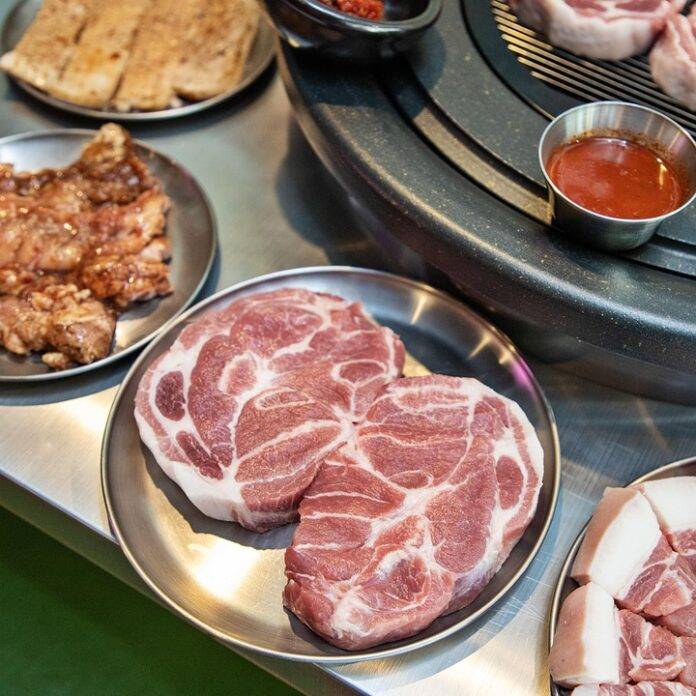Introduction
The global pork industry stands at a pivotal juncture, with branding emerging as a critical factor influencing consumer choices, market dynamics, and profitability. As the market continues to evolve, understanding the opportunities and challenges associated with pork branding becomes essential for stakeholders across the supply chain. This report delves into the future of global pork branding, exploring trends, financial implications, and strategic recommendations that can shape the industry’s trajectory.
Current State of the Global Pork Industry
In 2022, the global pork production reached approximately 120 million metric tons, making it one of the most consumed meats worldwide. According to the Food and Agriculture Organization (FAO), Asia accounts for over 60% of global pork production, with China being the largest producer, contributing nearly 50 million metric tons. The global pork market is valued at around $262 billion and is projected to grow at a CAGR of 2.5% from 2023 to 2030.
The consumption patterns are also shifting, with increasing demand for high-quality pork products driven by health awareness and culinary trends. For instance, the rise of organic and free-range pork products has created a niche market, prompting producers to rethink their branding strategies.
Opportunities in Global Pork Branding
1. Health and Wellness Trends
The growing consumer focus on health and wellness presents a significant opportunity for pork branding. Studies indicate that lean pork is a source of high-quality protein, vitamins, and minerals. Brands that emphasize health benefits, such as reduced fat content or organic certification, can capture health-conscious consumers.
For example, the U.S.-based brand “Niman Ranch” has successfully positioned itself in the premium segment by promoting its humane farming practices and commitment to sustainability, appealing to health and environmentally conscious consumers.
2. Sustainable and Ethical Practices
With increasing awareness of environmental issues, sustainability is becoming a cornerstone of successful branding strategies. Brands that adopt sustainable farming practices, reduce carbon footprints, and ensure animal welfare are likely to resonate with consumers.
The European Union has been a leader in this regard, with initiatives like the Green Deal aiming to make farming more sustainable. Pork brands that align with these values can enhance their market presence and consumer loyalty.
3. Technological Advancements
The integration of technology in farming and supply chain processes can significantly enhance brand transparency and traceability. Blockchain technology, for instance, allows consumers to trace the origin of their pork products, providing assurance regarding quality and safety.
Brands like “PorkCheckoff” have started using technology to ensure quality and traceability, which has become a vital selling point for consumers demanding transparency in food sourcing.
Challenges in Global Pork Branding
1. Market Volatility and Price Fluctuations
The pork market is subject to fluctuations due to various factors, including feed prices, disease outbreaks, and shifts in consumer preferences. For instance, the African Swine Fever (ASF) outbreak significantly affected pork production in Asia, leading to increased prices and supply shortages.
Brands must develop strategies to mitigate the risks associated with market volatility, such as diversifying product lines and optimizing supply chain management to ensure consistent quality and availability.
2. Competition and Market Saturation
The global pork market is highly competitive, with numerous players vying for consumer attention. Established brands often face challenges from new entrants offering innovative products. For instance, plant-based alternatives are gaining traction, appealing to the vegetarian and flexitarian segments of the market.
Brands need to differentiate themselves through unique value propositions, whether through superior quality, innovative products, or effective marketing strategies.
3. Regulatory Challenges
Pork producers must navigate a complex web of regulations concerning food safety, animal welfare, and environmental sustainability. Compliance with these regulations can be costly and time-consuming, particularly for small and medium-sized enterprises.
For example, the U.S. Department of Agriculture (USDA) and the European Food Safety Authority (EFSA) set strict guidelines for pork production, which can pose challenges for brands that fail to meet these standards.
Strategic Recommendations for Pork Branding
1. Focus on Brand Storytelling
Effective branding goes beyond the product itself; it involves creating a compelling narrative that resonates with consumers. Brands should emphasize their origins, farming practices, and commitment to sustainability. Storytelling can create emotional connections, fostering brand loyalty.
For instance, “Heritage Foods USA” emphasizes its commitment to preserving heritage breeds and traditional farming practices, appealing to consumers seeking authenticity.
2. Leverage Digital Marketing and E-commerce
As consumer shopping habits shift towards online platforms, pork brands must enhance their digital presence. Investing in robust e-commerce strategies and utilizing social media for marketing can help brands reach broader audiences and engage with consumers effectively.
Brands like “Farmer Focus” have successfully utilized social media campaigns to promote their pasture-raised chicken, illustrating how digital marketing can drive consumer engagement and sales.
3. Invest in Research and Development
To stay competitive, pork brands should invest in research and development to innovate new products that cater to changing consumer preferences. This could involve developing healthier options, such as lower-fat or organic pork, or exploring value-added products like pre-marinated or ready-to-cook options.
For example, brands like “Smithfield Foods” have introduced various products catering to convenience and health trends, demonstrating the importance of innovation in meeting consumer demands.
Conclusion
The future of global pork branding is rife with opportunities and challenges. By leveraging health trends, sustainable practices, and technological advancements, brands can position themselves for growth in an increasingly competitive market. However, they must also navigate challenges such as market volatility, regulatory hurdles, and evolving consumer preferences.
With strategic investments in branding, marketing, and product innovation, the pork industry can not only survive but thrive in the years to come, ensuring a resilient and sustainable global pork market.
[Read More: The State of the Global Pork, Swine, Pig, and Bacon Industry: A Comprehensive 2025 Report]




